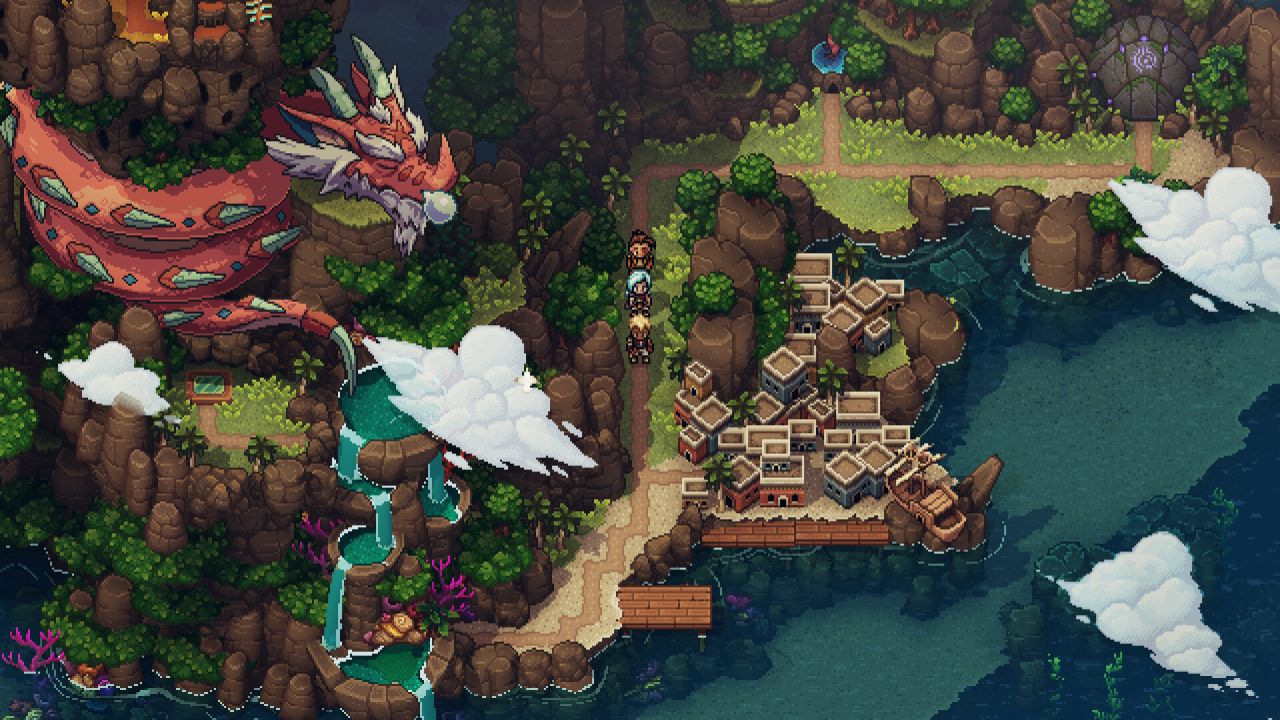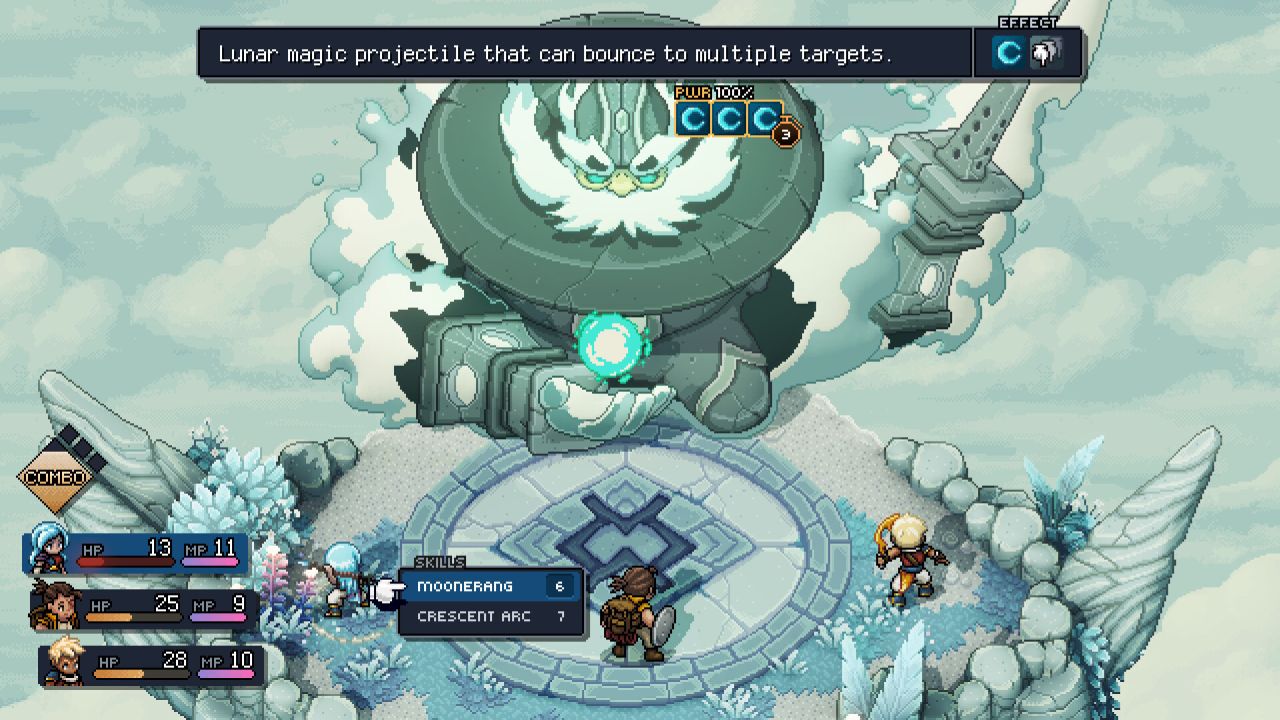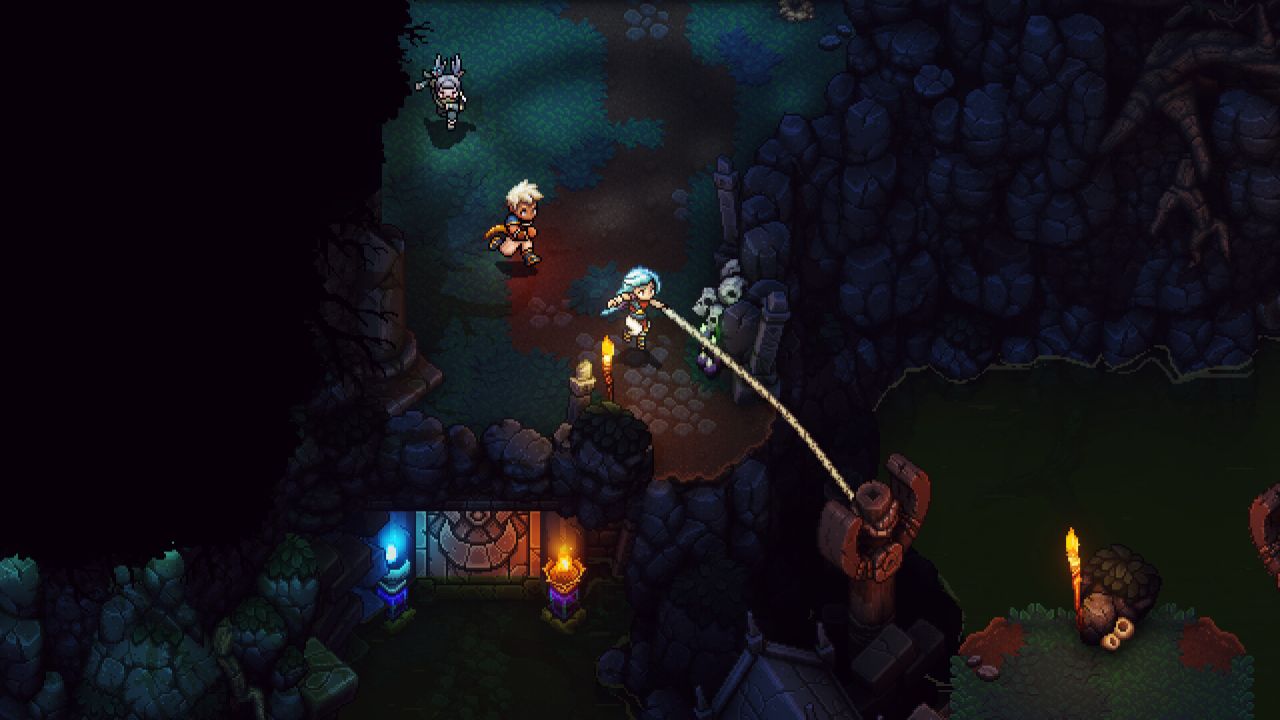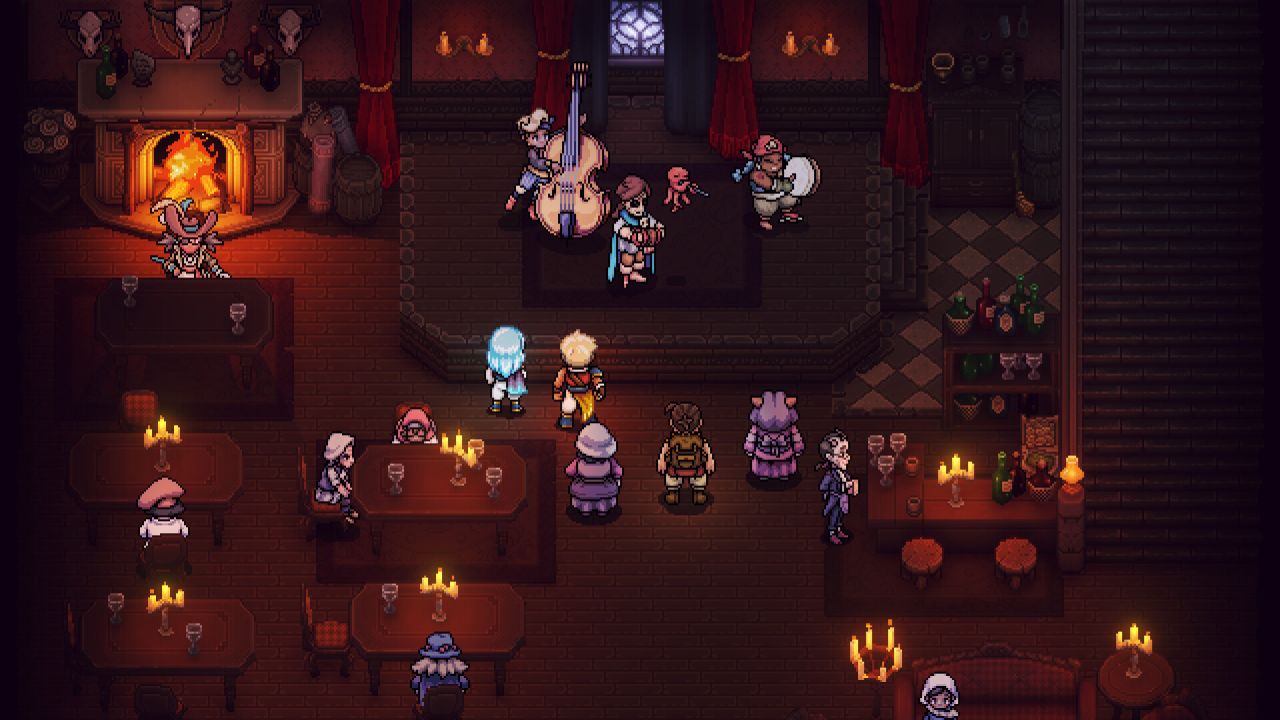Sea of Stars Review
There will always be something comforting about getting lost in a game that harkens back to the golden age of JRPGs. For many people, the 16-bit days were the first time they had a gamepad in their hands and embarked on epic adventures. Anything resembling this glorious time instantly takes them back to when they first interacted with the genre. Because of this, there has been an influx of games attempting to capture this nostalgia, including Chained Echoes and Octopath Traveler, which, to be fair, were reasonably good games. Recently released Sea of Stars, developed by Sabotage Studio, is another 2D nostalgic romp that will make any fan of the genre giddy at the knees, as it takes clear inspiration from Chrono Trigger with its battle system and open-world but also crafts a unique and engaging experience that is worth playing in its own right.

Like many JRPG’s, the story will be a big focal point, meaning the game is hefty on the text dialogue. The plot follows two teenagers, Zale and Valere, who are Children of the Solstice, a title bestowed onto someone born on either the winter or summer Solstice and possessing the power to control and manipulate solar and lunar magic. After many years of rigorous training, they are sent on a quest to defeat a powerful Dweller, a hideous, world-consuming monster. Dwellers are created by the evil alchemist known as The Fleshmancer and are unaffected by all types of magic besides one: eclipse magic. Coincidentally, the same powers the heroes inhabit. On the way to confront the Dweller, they must kill monsters sprawling the land. But things will escalate from there like many stories worth their salt.
The narrative has many moving parts, making for an engrossing journey. It had no problem holding my attention during the 35-40 hours with the game, from its fascinating lore and supernatural pirate shenanigans, to cosmic world-ending conundrums. It’s hard to go into specific events without heading into spoilers, but one moment, you will be consulting with a guiling oracle who prophesies your destiny; the next, you will be having an arm-wrestling match with a pirate and then helping out a village rebuild from scratch. It has all the bizarreness and whimsicalness you would want from a title like this.
Not only that, but all the characters you meet are incredibly charming as well, with their own distinctive traits, like the two protagonists who are levelheaded in nearly every scenario, their childhood best friend Garl, who joins your party later on and gets excited at any opportunity to cook for everyone, and the inquisitive and hyperexcitable travelling historian Teaks who tells stories by the campfire. Sea of Stars practically has it all; the only chink in the armour is the unsatisfying conclusion. There are two potential endings, and both plateaued compared to the previous highs in the storytelling. It just didn’t feel that dramatic, and there were still plenty of unanswered questions by the end.

The combat is an amalgamation of classic games brewed into one delicious melting pot. The most obvious influence is Chrono Trigger, as it utilises a turn-based active time system, meaning all enemies will have their own individual counter that will go down each time a member of your party takes an action. There will be three party members in a battle, and if all members’ health bars hit zero, then it is game over. Luckily, if a member is knocked out, they can be brought back into action after all the stars above their head disappear, with one star fading after every turn. Some of the battles can be rather challenging, so this style of combat allows you to plan out the perfect execution.
Another thing to consider is that monsters can become vulnerable to certain types of attacks throughout the battle, and a symbol above their head will indicate this. Sometimes, they will become weak to a regular attack, or it may be solar and lunar magic. This made every encounter feel different, so you always had to pay attention to the state of the combatants. One problematic creature you encounter in the first two hours can summon more of themselves into the battle, so taking them out before they have a chance to execute this move is highly important.
Mechanics borrowed from other games are far more subtle. If you press the action button at the exact right time, attacks and incoming aggression can be boosted or reduced, as seen in Super Mario RPG. One of the other homages that caught my eye was the nod to the Suikoden series, where building up the combo meter will allow you to use a special attack that is exclusive to those party members on the field. Abusing these combo attacks and their magic abilities is a good way to get good chunks of health gone from opponents, especially when it comes to boss battles. The combat was always a joy to partake in, and even though it pinches influences from various titles, it creates something wholesomely unique because you have to pay attention at each stage of the fight. It almost feels like a rhythmic dance. You know what you need to do next, but execution is key, or everything will fall apart. However, it feels so satisfying when you hit every beat correctly and maximise every potential move.

At the beginning of the game, you get to pick to play as Zale or Valere, and this will dictate who is at the front of the party when on foot, although you can change this later. Throughout the game, you will gain four other party members, with the three in your current party being visible as you roam. The way you traverse the world is another example of where Sea of Stars steals much of its homework from Chrono Trigger. When you are crossing from one point to another, you are on an old-school open map, where you can walk normally or use a nifty ship to sail the sea, but there will be no battle encounters. But when you eventually step into an area, it will be littered with creatures, campfire sites to replenish health, and even open rivers where you can fit in a spot of fishing. Around the locations you travel, there will be food to harvest that you can cook at the campfires and treatures chests that hold essential items like equipment upgrades or recipes.
There are tons of distinctive locations, from mountain and greeny terrains to a haunted pirate ship. The aspect that made these environments really stand out was how the layout felt like a mini maze, from climbing to specific platforms or walking on a thin tightrope. Some of the environmental platforming is better described as puzzles, though, as it requires you to use your location to your advantage, like employing solar and lunar magic or shining lights on separate reflective mirrors. It felt reminiscent of the platforming puzzles you would face in Golden Sun, making you think outside the box and use a new ability in the physical environment. But what makes it different is the fact the battles stay in that environment. This means that everything is there for a reason; there is a perfect amount of space for a fight to commence, and nothing is accidentally placed. It’s astonishing the amount of time the developers must have poured into figuring out the technicality of it all.
Speaking of which, the 2D environments are absolutely gorgeous, and it’s all the small things that really bring everything together, from the amount of detail on the characters and creatures to even the environmental background, like how the fire illuminates the campsite or a lightning bolt causes a shadow silhouette of our heroes from behind. This might not sound like a big deal, especially when considering modern graphics, but these things were not achievable back on older hardware, meaning this vibrant use of colourful pixel sprites and dynamic lighting to this standard is not often seen in these types of 2D games. The soundtrack also has some delightful chiptune songs, although it did occasionally fall on the repetitive side due to how long you would sometimes stay in a location.

Sea of Stars beautifully walks down the well-trodden path of feeling familiar and refreshing. It does not just focus on replicating the genre classics but simultaneously tries to incorporate modern gaming to elevate it to a new level from its original heyday roots. This JRPG will have no problem keeping you entertained throughout, and you’ll find it hard to stop playing because you want to find out what happens next.
